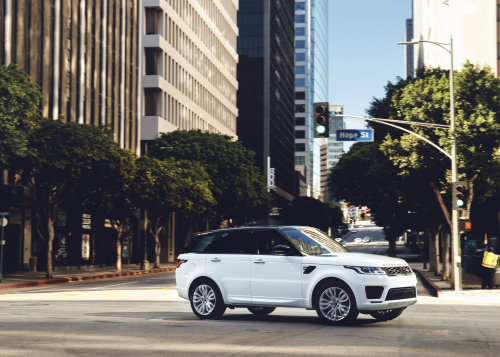- New 249PS 3.0‑litre SDV6 diesel powertrain joins Range Rover Sport line‑up for Europe
- Adaptive Cruise Control with High‑speed Emergency Braking enhances safety
- Range Rover Sport delivers dynamic performance and unrivalled capability, priced from £64,084

2019 Range Rover Sport
Range Rover Sport has always combined the refinement and capability of a large SUV with the performance of a sports car. With this latest update, designed to enhance the driving experience and customer convenience, the Range Rover Sport continues to be the benchmark luxurious performance SUV.
The new 249PS 3.0‑litre SDV6 twin‑turbo engine replaces the 2.0‑litre SD4 in European markets, delivering an additional 9PS and an extra 100Nm of torque. This translates into improved acceleration and a 0‑60mph sprint of 7.6 seconds (0‑100km/h in 7.9 seconds), 0.8 seconds faster than the 2.0 model, while meeting the latest EU emissions standards.

Customers have the option of the diesel engine alongside the efficient P400e plug‑in hybrid electric vehicle (PHEV) powertrain launched last year with a 51km all‑electric range.
Owners in China now have access to Predictive Energy Optimisation (PEO), not previously available in this market. It uses route data from the navigation system to plan the most energy efficient route.
The latest enhancements to the Range Rover Sport build on its credentials as the luxury performance SUV. With a more efficient powertrain line‑up, improved safety technology and state‑of‑the‑art lighting features, this is a vehicle that demands to be driven.
Nick Collins
Vehicle Line Director, Jaguar Land Rover
The dynamic performance and daily usability of the Range Rover Sport is assured with the introduction of Adaptive Cruise Control with Stop and Go. This enables the vehicle to maintain a set distance from the car in front and to follow it to a stop and pull away again, if stationary for less than three seconds.

2019 Range Rover Sport
This is available alongside Adaptive Cruise Control with Steering Assist. This system helps keep the vehicle centred in its lane by applying moderate steering interventions with the driver’s hands on the wheel. The technology uses lane markings and, or where no lane markings can be detected, the path of the vehicle in front. Switching lanes or braking deactivates the system.
High‑speed Emergency Braking is available with both forms of Adaptive Cruise Control, reducing the risk of collision by applying the brakes when an obstruction is detected ahead.

